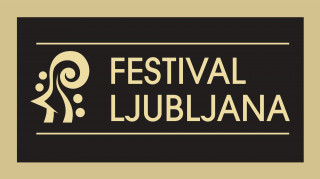Important information
Programme:
J. Gallus:
Iocundare filia Sion, OM I/7
Dies est laetitiae, OM I/29
Missa super Sancta Maria (Kyrie, Sanctus, Agnus Dei), SQM 8
Erravi sicut ovis, OM I/75
Domine quando veneris, OM I/84
Maria stabat ad monumentum, OM II/38
Ascendo ad patrem meum, OM II/41
Si vitare velis, M 15
Principibus placuisse viris, M 24
Quam bene apud memores, M 42
Tu ne cede malis, M 45
Media vita in morte sumus, OM I/65
Iam non dicam vos servos, OM II/60
Missa super Iam non dicam (Gloria), v rokopisu ohranjene skladbe
preserved composition manuscripts
Iubilate Deo, v rokopisu ohranjene skladbe / preserved
composition manuscripts
Laus et perennis gloria, OM III/57
Exsultate iusti in Domino, OM IV/141
Alleluia. Cantate Domino, OM II/34
From the very beginning, Glasbena Matica had ambitious plans: among other things, the society played an important role in raising awareness of the continuity and tradition of Slovenian non-traditional songs. In 1892, with the expert help of Josip Mantuani, it staged a historical concert in honour of the 300th anniversary of the death of Jacobus Gallus. For this purpose, the precious heritage of one of the main Renaissance composers was recovered from many “dusty” European archives and libraries, in order to prepare a demanding, magnificent event, featuring the singers of the Matica choir in all their glory, directed by the accomplished Matej Hubad, and bringing the music world’s attention to a virtually forgotten composer. Gallus’s works, which at the time were considered the “highest pinnacle of Slovenian music,” thereby found a lasting place in Slovenian choir music.
Performing Gallus’s characteristic and often daring compositions, which are a combination of Venetian spirit, German sobriety, French liveliness and English precision, the Slovenian Philharmonic Choir conducted by the academic church musician, organist and choirmaster Gregor Klančič, will round off the 36th Slovenian Music Days, dedicated to Ljubljana’s Glasbena Matica. The concluding concert, held in the spirit of the most prominent musical forms of Gallus’ time (mass, motet and madrigal), will unveil the fundamental traits of the composer’s rich and extensive opus. This master of counterpoint merged traditional Franco-Flemish polyphony with the new style of the time to create a unique musical language, underlined with an original harmonic base.



